How it Works: Electric Cars
I think we have all realized that we are moving toward a future dominated by electric/hybrid cars. Although people like myself will forever love the charm and allure of traditional gas-powered cars electric cars have certain advantages that are appealing to variety of consumers. Come explore how exactly these cars of the future work and the advantages and disadvantages of owning one.
Here I will breakdown the main components of a common electric vehicle. You will be able to pick and choose which component to read about and I will do my best to explain the connection between components. The included images should give you an idea of how components look before you read about them. Although the components work in unison I have them listed in order of importance according to my opinion so you some sense on where to start. Thank you for reading!!!
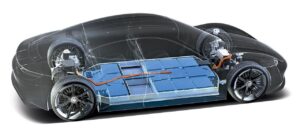
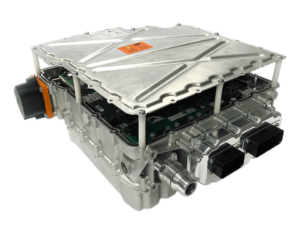

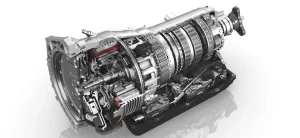

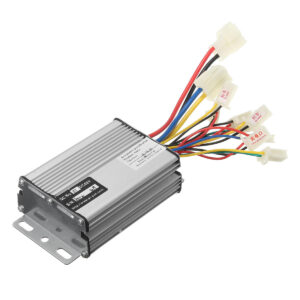


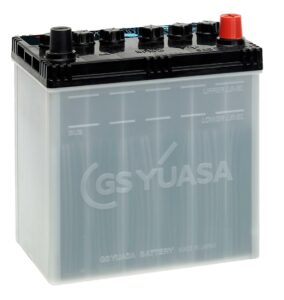
Basic Explanation
Starting off with the electric motor the basis on which it runs is electromagnetism. Let’s quickly dissect what an electromagnet is with a simple physics experiment.
In order to create a very simple electromagnet you would need to take a nail and then wrap thin copper wire around it about a bunch of time until fully covered and connect the ends of the wire to a battery. This would create a magnet. If you then suspended this nail (electromagnet) between the positive and negative ends of two other magnets the fundamental law of magnetism would take effect. The positive end of your nail electromagnet would repel away from the positive end of one magnet and attract toward the negative end of the other. Your nail (electromagnet) would complete this motion and stop in place. This is great and all, but we need the motor to keep running for the car to go anywhere, believe it or not. This is done by flipping the nail’s magnetic field which basically involves flipping the ends of the battery. If the nail’s magnetic field is flipped at precisely the moment of a half turn your nail (motor) will spin freely.
Powering an Electric Motor
Now that you know the principle behind electromagnetism I will apply what you just learned to an actual motor.
To power, a motor an electrical current is sent to the windings of the stator. The stator windings are a series of copper coils wrapped around an iron core which creates an electromagnet just like the copper coil around the nail did. The rotor, which is connected to the motor shaft is either a magnet or another electromagnet and generates a surrounding magnetic field as well. The time-sequenced current creates the magnetic field and the magnetic fields of the stator and rotor interact to produce a torque which is what causes rotation in the rotor and shaft creating mechanical energy and what actually moves the car. There are two most commonly used motors out there and they are AC and DC powered which I will add on later. They both come with their advantages and disadvantages but are both commonly used in electric vehicles.
The battery pack in an electric car is a key component because they are what power the car itself. The battery pack itself is made us of a number of modules which themselves are made up of over 7000 cells. These cells are very similar to the lithium-ion batteries you use at home but a little bit bigger.
When depleted, the batteries are recharged using grid electricity, either from a wall socket or a dedicated charging unit. Since they don’t run on gasoline or diesel and are powered entirely by electricity, battery-electric cars and trucks are considered “all-electric” vehicles.
Electric vehicles don’t produce tailpipe pollution—they don’t even have a tailpipe. However, the electricity they use may produce heat-trapping gases and other pollution at the source of its generation or in the extraction of fossil fuels. The amount of pollution produced depends on how the electricity is made. In the United States, battery electric cars charged off the dirtiest coal-dominated grid still produce less pollution than their gasoline-powered counterparts.
Batteries can store only direct current electricity, but many electric cars run on alternating current electricity. The inverter takes the direct current electricity and converts it into alternating current electricity for the electric motor to use. The inverter is an extremely important component in the electric car because without it the car wouldn’t run. You simply cannot run the DC current through an AC motor because of how an AC motor works as explained in the electric motor section.
The inverter controls the frequency of the alternating current sent to the electric motor, which essentially means the inverter controls the speed of the vehicle. It acts as the brain of the system, directing the motor and other components. The inverter can also change the amplitude of the frequency which further controls the power output to the wheels. In the inverter there are further controllers that house the software of the car has built in to which can alter things like traction control and different driving modes. More on this later.
The transmission in a car, also known as a gearbox, uses gears to transfer power from the engine to the drive wheels. Your internal combustion engine needs this transfer of power because the engine can only operate within a specific rotation per minute (RPM) range that doesn’t line up with the RPM of the wheels. Several types of transmissions exist in modern cars. The automatic transmission claims the top spot in vehicles manufactured today, followed by the continuously variable transmission (CVT).
The automatic transmission comes with as many as 12 gears (which often need to be serviced regularly). When the engine RPM gets too high, the automatic transmission shifts gears, allowing the engine to operate at a lower RPM while providing steady power to the wheels. This process continues as you accelerate and works in reverse as you slow down.
The mechanical downside to combustion engines lies in their limited rotations per minute — too few RPM and the engine stalls out. Too much RPM and the engine can damage itself from turning too fast. Every engine has a sweet spot or range called the powerband that produces enough rotational force to move the wheels but not too much to cause damage. Most production cars have a range between 800 and 7,000 RPM. Because of this powerband range, an internal combustion engine needs multiple gears to achieve the speeds driving requires.
An electric motor operates at a much broader powerband. Electric motors achieve peak torque at zero RPM and can operate safely at up to 20,000 RPM. Electric motors still need a gear to allow the motor and wheels to turn at different speeds, but this wide RPM range allows a single gear to transfer power from the motor to the drive wheels over the entire speed range.
An automotive DC-DC converter receives high voltage from the battery and converts it to a lower voltage to power on board devices such as the instrumentation panel, entertainment system, sensors, LED lighting, and any other on board devices requiring low voltage DC power. In electric vehicles which use a DC motor, actually running the motor can use up to three times the voltage provided by the battery. With the help of the right converter, we can bridge this gap without having to resort to a larger, prohibitively-heavy battery. Manufacture’s strategies in DC-DC converter development include reduction in size and higher efficiency in order to provide advantages to their customers.
The electric vehicle controller is the electronics package that operates between the batteries and the motor to control the electric vehicle‘s speed and acceleration much like a carburetor does in a gasoline-powered vehicle. The controller transforms the battery’s direct current into alternating current (for AC motors only) and regulates the energy flow from the battery. Unlike the carburetor, the controller will also reverse the motor rotation (so the vehicle can go in reverse), and convert the motor to a generator (so that the kinetic energy of motion can be used to recharge the battery when the brake is applied).
Modern controllers adjust speed and acceleration by an electronic process called pulse width modulation. Switching devices such as silicone-controlled rectifiers rapidly interrupt (turn on and turn off) the electricity flow to the motor. High power (high speed and/or acceleration) is achieved when the intervals (when the current is turned off) are short. Low power (low speed and/or acceleration) occurs when the intervals are longer.
The controllers on most vehicles also have a system for regenerative braking. Regenerative braking is a process by which the motor is used as a generator to recharge the batteries when the vehicle is slowing down. During regenerative braking, some of the kinetic energy normally absorbed by the brakes and turned into heat is converted to electricity by the motor/controller and is used to recharge the batteries. Regenerative braking not only increases the range of an electric vehicle by 5 – 10%, but it also decreases brake wear and reduces maintenance costs.
At its most basic, an EV charger pulls an electrical current from either a 240v outlet or the grid it’s hardwired to and delivers that electricity to the vehicle, just like any other appliance or device you charge by plugging into the wall.
How Long Does it Take to Charge?
How long it takes to charge an electric vehicle depends on the type of EV charging point you are using. Level 1 electric vehicle chargers will charge an EV at a rate of 2 to 5 miles per hour. Level 2 EV charging points can charge an EV up to 15 times faster than Level 1 charging points. They can charge 13-75 miles per hour. DC Level 3 EV chargers can charge 80% of an EV’s battery in 10 to 30 minutes. This is of course the fastest charging option available on the market today. DC fast chargers are not compatible with all EVs.
Gasoline and diesel engines generate so much heat that if they’re not properly cooled, they can self-destruct in a matter of minutes. Electric vehicles (EVs) obviously don’t have that engine issue, but their batteries need to be cooled to help preserve their performance and lifespan.
Conventional vehicles pull air in through the front grille, but many EVs don’t even have a grille, and if they do, it’s mainly for looks instead of function. It may seem to you like it’d make more sense to keep the grille and use it for battery cooling, but it generally doesn’t work that way.
Instead, there are different methods for maintaining ideal battery temperature, known as thermal management. Even if the air is used, EVs are designed with better ways to get air directly where it needs to be, for the battery and for any other components that require airflow. A front grille usually isn’t the most efficient method. The battery is naturally going to generate heat due to the current flow, especially when the battery is being fast-charged. Air cooling is simple and relatively inexpensive, but liquid cooling, while more complex, does a better job.
Some common liquid cooling loops contain coolants such as ethylene glycol and the electric pump circulates the coolant through the batteries. Also, there is a radiator someplace near the front of the car that is used to release heat into the space surrounding the car.
Generally, the auxiliary battery is used to support all 12-volt electrical systems on the vehicle. The exceptions are the air conditioning and heating systems. In most cases, the auxiliary battery supplies power to accessory systems, headlights, audio systems, and computer controls.
An auxiliary battery can be used as a safety backup to support the main battery when required or to provide constant voltage for specific vehicle systems. Many vehicles with Start/Stop and ADAS (Advanced Driver-Assistance Systems) systems may also utilize an auxiliary battery alongside the main vehicle starter battery.
